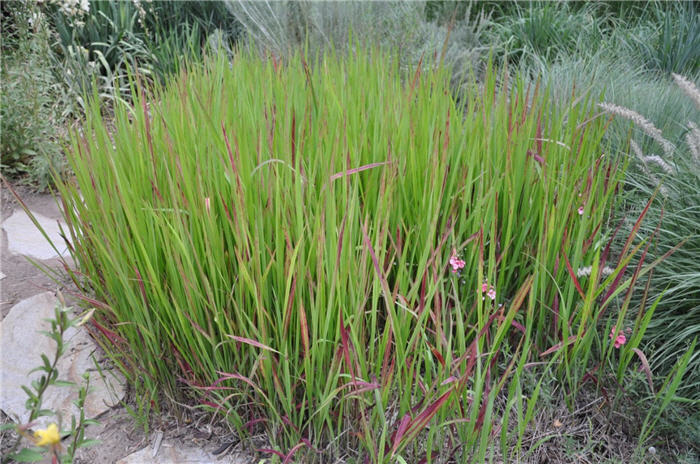| Botanical Name: Imperata cylindrica 'Rubra' | |
| Common Name: Japanese Blood Grass |

-
Anatomy
-
Culture
-
Design
Plant Type
Ground cover, Perennial, Grass
Height Range
1-3'
Flower Color
n/a
Flower Season
n/a
Leaf Color
Green, Red
Bark Color
n/a
Fruit Color
n/a
Fruit Season
n/a
Sun
Full, Half
Water
Medium
Growth Rate
Moderate
Soil Type
Sandy, Clay, Loam
Soil Condition
Average, Rich, Well-drained, Moist
Soil pH
Neutral
Adverse Factors
Invasive
Design Styles
Japanese, Woodland
Accenting Features
Specimen
Seasonal Interest
n/a
Location Uses
Perennial Border, Patio, With Rocks
Special Uses
Container, Mass Planting
Attracts Wildlife
n/a
Information by: Stephanie Duer
Photographer:
Photographer:
-
Description
-
Notes
Japanese Bloodgrass has very vertical leaves that emerge bright green with wine-stained tips. Foliage becomes increasingly red as season progresses, turning copperish in winter. It is a lovely grass providing great vertical interest and a lovely color contrast, but it is invasive and will spread, choking out smaller plants and tangling with larger ones. Best used in confined areas or containers.
Cut back in late winter to early spring, just as new foliage is emerging. Due to its spreading tendencies, it is best suited to large areas as a ground cover, in containers, or confined between walks, drives, and buildings. It absolutely will spread.